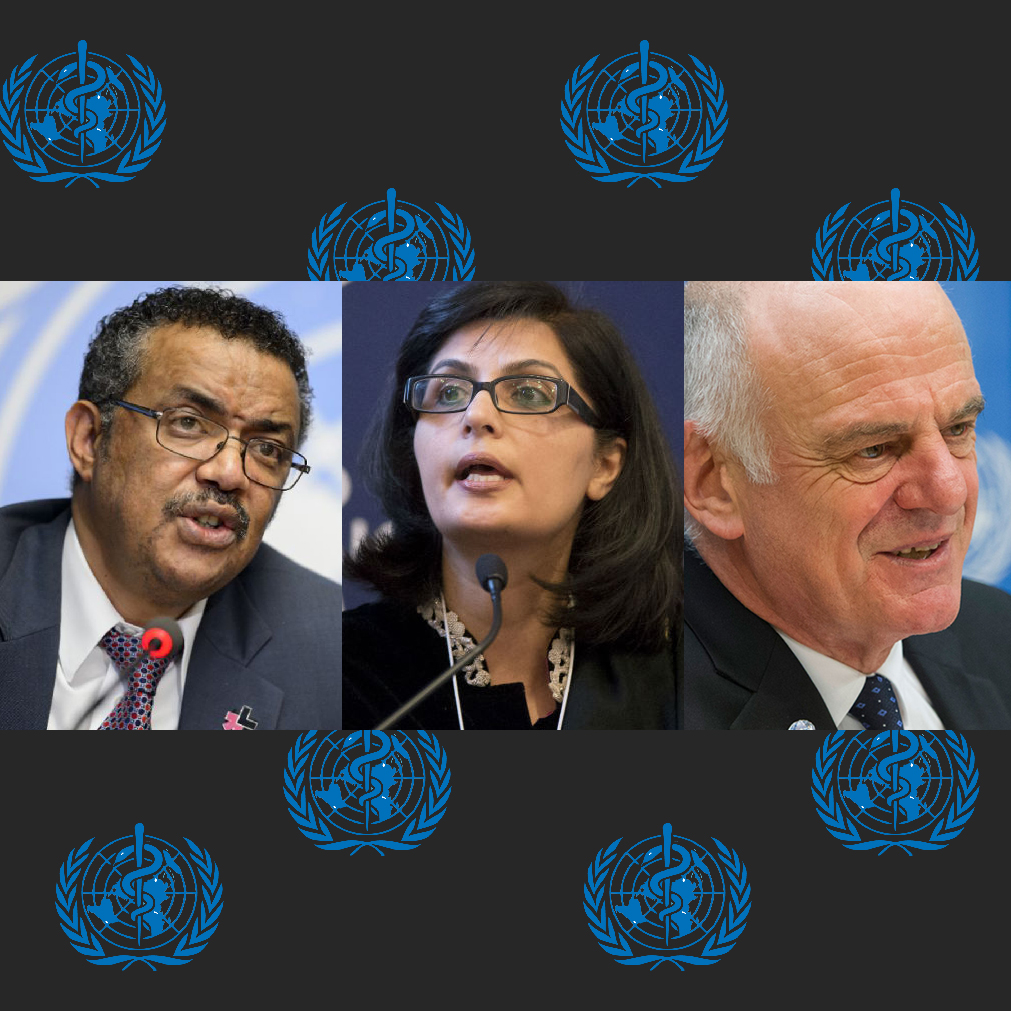One of the most important organizations in global development, the World Health Organization (WHO), will soon have a new leader. The current Director-General, Dr. Margaret Chan, will complete her second and final term in June 2017, and her replacement will be chosen from a pool of six talented candidates — four men and two women.
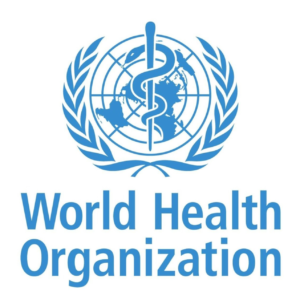
The Director-General is WHO’s chief technical and administrative officer, who represents and oversees WHO’s international health work. The appointment is of great importance to our community of global health and rights advocates, and even more so to girls and women around the globe. To get more clarity on their plans and intentions, Women Deliver asked each of the candidates a series of questions. Their responses are below.
Although this election is not up for popular vote, the people always have a voice. We encourage you to consider the below responses and use your networks to champion the candidates you most believe in. All six of the nominees are strong believers in the transformative power of girls and women, and we are hopeful that whoever is appointed will continue to push for increased investments in their health, rights, and wellbeing.

What are the most important connections between gender equality and a healthy world, and how would you address them in your work as DG?
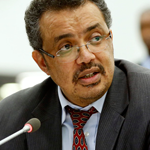 Dr. Tedros Adhanom:
Dr. Tedros Adhanom:
I believe that gender equality brings sustainable development – that investments in girls’ and women’s health and rights are investments in a healthy and more prosperous future. Healthy, empowered girls and women have the potential to build stronger communities, economies and nations and ultimately transform entire societies. As Director-General, I will encourage bolder and more sustainable investments and partnerships to advance girls’ and women’s health and rights.
I will also enhance WHO’s capacity to disaggregate data by gender and collect better data on the intersection between gender and health.
Dr. Tedros Adhanom Ghebreyesus
These efforts will help policymakers develop programs and policies that enhance equity and ensure that women, girls and young people can access health services that meet their needs.
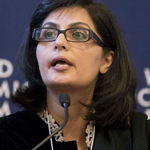 Dr. Sania Nishtar:
Dr. Sania Nishtar:
Addressing gender disparities is crucial to enhancing both population health and global development and to achieving physical and mental health for all people. Globally, adolescent girls and women remain at increased risk, with poor access to family planning and care during childbirth, higher incidence of sexually transmitted infections, and vulnerability to sexual violence.
Gender equity enhances productivity. As Director General, I will promote gender equity both internally and externally.
Dr. Sania Nishtar
This means complementing our strong commitment in our programs with an approach that promotes structural and institutional mechanisms and protections for women and girls in Member States.
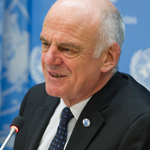 Dr. David Nabarro:
Dr. David Nabarro:
The values which underpin the work of WHO include a commitment to equity in relation to (a) access to health care and (b) health outcomes.
The 2030 Agenda for Sustainable Development includes a clear commitment, in goal 10, to equality.
Dr. David Nabarro
There is also an explicit focus on leaving no-one-behind. WHO as an organization is in the process of assessing ways in which it can best contribute to the realization of the SDGs. There is always scope for the use of health and nutrition indicators as an aid to examining the extent and nature of inequalities within societies. I sense that many of the specialized international agencies are in the process of exploring how they can better contribute to the totality of the 2030 Agenda for Sustainable Development. This is not straightforward and will require several iterations at different levels within the organizations. The same sense of an evolving understanding of what the 2030 Agenda means in practice is reported from national and local governments, businesses and civil society groups.

How will you ensure that girls’ and women’s health, rights and wellbeing is mainstreamed across WHO’s work?
Dr. Sania Nishtar:
At the global scale, we must align with other United Nations institutions to unequivocally promote the fundamental right of every individual to health equity, without fear of discrimination or fear of violence. This necessarily calls for the formulation and endorsement of strategies to improve access to sexual and reproductive health information and education, and services, ranging from maternal health services and emergency obstetric care. This includes the prevention and treatment of sexually transmitted infections and other reproductive cancers, and the right to consensual marriage and safety from harmful traditions and violence.
While the member states bear the responsibility to recognize and uphold these rights, WHO clearly has supportive and advisory role to play
Dr. Sania Nishtar
in order to in identify enabling factors and barriers to promoting the health of women and girls and promoting evidence based solutions to address them.
 Dr. David Nabarro:
Dr. David Nabarro:
As an International Geneva Gender Champion, WHO’s Director-General Dr. Margaret Chan has already signed the Geneva Parity Pledge, in addition to taking on the following two measurable and accountable commitments to further the principles of this commitment. By September 2016, the foundation module of the WHO gender, equity and human rights e-learning series on mainstreaming competencies will be completed by 80% of new staff at headquarters, and 90% of global staff of the Gender, Equity and Human Rights Team will have completed the whole series of seven modules. By September 2017, the number of WHO female staff in the professional and higher categories is to be increased by 3% from 42% in 2015 to 45% in 2017, with a focus on increasing the number of women at the P5 level and above.
I will abide by the Gender Parity Pledge and these additional commitments and will aim to develop others for subsequent years in line with the Gender Parity Pledge.
Dr. David Nabarro
 Dr. Tedros Adhanom:
Dr. Tedros Adhanom:
Women, girls and young people must be at the center of WHO’s work and mandate – because when they thrive, everybody does. As Director-General, I will re-orient WHO’s approach to focus on women, children and adolescents, particularly those living in humanitarian, fragile and hard-to-reach settings.
I will also strengthen WHO’s capacity to monitor results, resources and rights, in line with the goals of the Global Strategy for Women’s, Children’s and Adolescents’ Health, and hold governments accountable for their commitments.
Dr. Tedros Adhanom Ghebreyesus
I will advocate for increased investments, including a Grand Challenges initiative to address key gaps by developing innovations that empower women and girls. And I will continue and intensify WHO’s work with other UN agencies and global stakeholders and initiatives, including the Partnership for Maternal, Newborn and Child Health, Family Planning 2020 and Women Deliver.

What place should sexual and reproductive health and rights have on the global health and sustainable development agendas – and in ‘your’ WHO?
 Dr. David Nabarro:
Dr. David Nabarro:
I would like to see the widespread adoption of an approach to the SDGs that is both feminist and child-centered. Given their focus on aspects of being human that are uniquely borne by women and are shaped during childhood, it seems to me appropriate that the goals are explicitly appreciated through the eyes, minds and hearts of both women and children (in as much as this appreciation may differ from how they are generally viewed by men). As I see it, it is possible for a man to appreciate sustainable development issues from a feminist or child-centered perspective. I believe that such a disaggregated approach will greatly help those responsible for implementation to work for health equity between women and men, girls and boys – both within the organization and without.
My personal position is that women will never be able to contribute fully to the 2030 agenda for sustainable development agenda unless they are able to access comprehensive reproductive health care.
Dr. David Nabarro
 Dr. Tedros Adhanom:
Dr. Tedros Adhanom:
Family planning is one of the most game-changing interventions for women, families, communities and countries. In Ethiopia we used community based female health workers to expand family planning services with privacy. This resulted in five-fold contraceptive prevalence rate from 8% in 2000 to 40% in 2014. The increased use of family planning services and birth spacing among women offers increased opportunities to participate in the labor force, which in turn led to economic and political empowerment. We will only be able to realize the ambitious health and development targets set forth by the SDGs if we make sexual and reproductive health and rights a top priority on the global health and sustainable development agendas.
WHO must work alongside governments and regional organizations – in close collaboration with civil society, private sector, other UN agencies, donors and other key stakeholders – to drive the global sexual and reproductive health and rights agenda
Dr. Tedros Adhanom Ghebreyesus
so that women, men and young people can access the full range of sexual and reproductive health services of their choice.
 Dr. Sania Nishtar:
Dr. Sania Nishtar:
Sexual and reproductive health rights (SRHR) are central to the work of WHO and to the post-2015 global development agenda. In addition to full alignment with the Every Women Every Child movement and the Secretary General’s Global Strategy for Women’s, Children’s and Adolescent Health, as Director-General of the WHO, I would prioritize adherence to and accelerate development of global strategy documents and guidelines addressing SRHR, including the Global Health Sector Strategy on Sexually Transmitted Infections 2016-2021, the Global Plan of Action on Violence Against Women and Girls, and the Global Strategy for Women’s, Children’s, and Adolescent’s Health 2016-2030. In addition to indicators on family planning and disease prevalence, metrics must focus on equity and include broader social issues such as protection from harmful practices. We must collaborate with institutions who serve to provide rigorous high-quality research and promote evidence-based strategies for improving SRHR outcomes on a global scale.
While strategies will need to be tailored to different country contexts based on various social and legal realities, ‘my’ WHO will advocate and strategize universal access to SRHR,
Dr. Sania Nishtar
promote youth access, and advocate for SRHR to be included as a goal in other development sectors, including education, economic benefits, gender equality and the environment.

Recognizing that adolescents and young people are often the most marginalized, and their health
needs often ignored, how will you work to ensure that their sexual and reproductive health needs and
opportunities are better met?
 Dr. Tedros Adhanom:
Dr. Tedros Adhanom:
The wellbeing of women, children and adolescents is one of my leadership priorities. Around the world, far too many young people lack access to the sexual and reproductive health services they need to survive, thrive and achieve their full potential. Addressing the unique needs of adolescents will require a multi-sectoral approach. Girls’ education is a strategic solution to many of the challenges that young women face – health, economic, and political. The longer that girls are enrolled in formal education, the more informed and empowered they become in managing their personal health and relationships, including sexual and reproductive health. UNESCO Education For All estimates that if all mothers completed primary education, we would save the lives of nearly 100,000 mothers and if all mothers completed secondary education, we would save the lives of 3 million children under age 5.
Providing comprehensive sexual education services in schools and preventing school drop outs particularly due to health issues such as menstrual hygiene should be part of a comprehensive sexual and reproductive health agenda for adolescents.
Dr. Tedros Adhanom Ghebreyesus
Young girls are becoming brides and mothers too soon, endangering both their health and the fundamental rights. I will champion the implementation and monitoring of the Global Strategy for Women’s, Children’s and Adolescents’ Health, as well as the development of stronger and better-resourced national adolescent health and well-being programs, including in schools.
 Dr. Sania Nishtar:
Dr. Sania Nishtar:
Adolescence is a time during which individuals, particularly girls, are uniquely vulnerable to sexual and reproductive health issues. Adolescent girls account for one-fifth of new HIV infections globally and are at heightened risk of sexual and marital coercion, unwanted pregnancy and unsafe birth. Young men and women both face barriers to receiving comprehensive sexuality education, information, privacy, and prevention and care for sexual and reproductive health. This represents a gap in SRHR that must be addressed in order to achieve more equitable health outcomes, but also crucially to promote empowerment of young women around the world.
At the global scale, the next Director General has an obligation to advocate for access to sexual and reproductive health information, education and resources for young people and young women in particular.
Dr. Sania Nishtar
While Member States have ultimate authority with regard to the definition of these services as legal rights, WHO can support and empower young people to address social and legal restraints facing them in different settings. WHO should promote an environment in which young people can participate in the discussion including through youth-led needs assessments and reporting on barriers. It is important that adolescent voices, regarding health needs, vulnerabilities, and access be incorporated the dialogue and strategy-development process to address these disparities.
 Dr. David Nabarro:
Dr. David Nabarro:
WHO’s work on sexual and reproductive health should always be based on evidence: where there is evidence that lack of education or access to care is associated with people being at risk of illness or death, and that appropriate education or care strategies will reduce the risk, WHO should disseminate the information.
So if young people’s access to comprehensive sexuality education can be shown to be associated with their enjoying better physical and mental health, WHO should be explicit about these linkages.
Dr. David Nabarro
Not all Member States can be expected to act on such information in the same way: it is inevitable that different communities and governments will make their own decisions on how they use the information in national programmes.

What role you do feel advocacy and accountability plays in global health and achieving health for all? And how do you intend to work with civil society?
 Dr. Sania Nishtar:
Dr. Sania Nishtar:
The first pledge in my vision centers on achieving meaningful transparency and accountability. I regard both as being vital for reclaiming WHO’s leadership role in global health and achieving the vision for WHO centered on health for all. To signal my commitment from the outset, I aim to set a standard of transparency by making public, financial statements of my campaign, including all sources of funding. This is essential to demonstrate that there will be no hidden influence of campaign financing during my term in office. I know first-hand the value civil society can bring to promoting health goals. However civil society is not monolithic and
[civil society] can play various roles—as service providers, watchdogs, advocates for change, agents to compel independent accountability; and as expert groups, communities and voices, civil society has a lot to offer.
Dr. Sania Nishtar
To harness their immense potential, astute understanding of how they operate is critical. This becomes more important in view of the recent adoption of FENSA—the Framework of Engagement with Non-State Actors by WHO’s Member States (civil society is one category of non-state actors). Under my leadership, WHO will promote strategic engagement with NSAs, efficiently and effectively, while enforcing all procedures of FENSA to build safeguards against undue influences, which can undermine public confidence and create a reputation risk.
 Dr. David Nabarro:
Dr. David Nabarro:
Multiple stakeholders are involved in global health. Civil society networks, individual NGOs, from the international down to the community level, professional associations, the media, think tanks, national and transnational corporations, the individuals and informal communities that have found a new voice and influence thanks to ICT and social media – all of these actors influence decision making. The adoption of FENSA (Framework of Engagement with Non-State Actors) this year marked a tremendous step forward for WHO. WHO needs to engage with multiple stakeholders in global health, but it must do so in a manner that will not undermine the integrity of its reputation, evidence and standards. I will safeguard the primacy of Member States in making policy decisions. Any institution with a core function that focuses on the setting and application of standards requires robust safeguards against influences from others. One of WHO’s core functions relates to the setting and application of standards for health. I will protect this work from inappropriate influences. FENSA provides an important tool in this regard. I welcome the clarity that FENSA will bring to the role of NGOs, as civil society is a critical partner for WHO.
I will seek to ensure that FENSA is implemented in a manner that gives those who are less powerful the space to participate fully.
Dr. David Nabarro
I am pleased that WHA has requested that the Director-General conduct an initial evaluation in 2019 on the implementation of FENSA. In my view, that review will provide an important opportunity to assess whether FENSA is operating as it should or whether any further adjustments are needed.
 Dr. Tedros Adhanom:
Dr. Tedros Adhanom:
Through the SDGs and other global compacts, global and national leaders have made ambitious commitments aimed at ensuring health for all and driving sustainable development. It is critical to hold these leaders to account for delivering on the promises they’ve made – and
advocacy organizations, like Women Deliver, play an invaluable role in putting the pressure on and develop mechanisms for ensuring that action follows rhetoric.
Dr. Tedros Adhanom Ghebreyesus
I envision WHO mobilizing action around a shared vision and goals with all stakeholders, including member states and civil society, to lead from the center and the front to ensure health for all through both technical and political leadership.

What would be your key priorities as Director-General of WHO?
 Dr. David Nabarro:
Dr. David Nabarro:
My vision for WHO is to make critical contributions in relation to four main priorities for global health.
- Firstly, alignment with the Sustainable Development Goals (SDGs). Health is central to the achievement of the SDGs. Delivering on the SDGs requires inter-sectoral collaboration with a stewardship role for the health sector. Within WHO there will be a need for constant inter-departmental collaboration;
- Secondly, transforming WHO to respond to outbreaks and health emergencies. Here WHO is expected to exercise leadership by providing technical expertise, while empowering others to take action. WHO needs to live up to these expectations.
- Third, deepening trust in its engagement with Member States, serving as a trusted partner of all governments (and peoples) while holding itself to the pledges that world leaders themselves made in the 2030 Agenda to leave no one behind;
- Fourth, advancing implementation of people-centered health policies everywhere with a focus on access to health care for all (especially women, children and adolescents, people with long-term illness, disability and the elderly); maximizing the capabilities of all who contribute to people’s health and provide care. To be sure this is not at all a new topic, but it is crucial to progress faster on implementation.
 Dr. Tedros Adhanom:
Dr. Tedros Adhanom:
I have been a strong advocate for gender equality and women’s empowerment throughout my career. During my tenure as Director-General, I will continue to champion gender equality and promise to place the wellbeing of women, children and adolescents at the center of my agenda. Achieving the ambitious targets of the Sustainable Development Goals requires improving the health, dignity and rights of women, children and adolescents. We need to address the lack of access to maternal health, sexual and reproductive health, family planning and adolescent health services. We need innovation, research and data to develop gender-responsive health policies. We also need effective partnerships with national governments, civil society and the private sector to drive progress. Together, we can put health at the center of the gender equality agenda – and gender equality at the center of the health agenda.
Secondly, I will transform WHO into a more effective, transparent and accountable agency that is independent, science- and innovation-based, responsive and harmonized, with a shared vision across all levels. It will be critical to implement bold reforms, while maintaining organizational stability to deliver impactful results.
Thirdly, I will advance universal health coverage to ensure all people can access the services they need without risk of impoverishment. This includes leveraging domestic resources for health, strengthening primary health care, and expanding access to sexual and reproductive health services, as well as preventive services, diagnostics and high-quality medicines for communicable and non-communicable diseases. These efforts should identify and scale up best practices as well as tailoring the actions into the needs and context of countries.
Fourthly, I will promote global health security by strengthening the capacity of national authorities and local communities to detect, prevent and manage health emergencies, including antimicrobial resistance.
Finally, I will undertake the essential work of supporting national health authorities to better understand and address the health effects of climate and environmental change.
 Dr. Sania Nishtar:
Dr. Sania Nishtar:
In terms of priorities for global public health, my vision outlines four programmatic areas—operational readiness in outbreaks and emergencies; strengthened action on global public goods; focus on supporting countries to reduce the health risks of climate change; and country-relevant support to achieve the SDGs. I regard infectious outbreaks, antibiotic resistance and the silent pandemic of non-communicable diseases, as the biggest immediate threats to the collective health of people, worldwide. These, together with the longer-term threat of climate change, threaten to wipe out the development gains of the last century. In addition to the challenge of collective health security, it is also critical to address other more ‘individual-centric’ threats to health, such as widening health inequities, poor coverage, lack of financial risk protection and poor quality of care. This creates a strong imperative for countries to adopt Universal Health Coverage (UHC) as a policy goal, given its cross-cutting potential to address both sets of challenges.
My New Vision for WHO is centered on 10 Pledges for action, six of which are focused on reclaiming WHO’s primacy. I have therefore pledged to institutionalize accountability and transparency, ensure value for money, and drive a culture based on results and concrete delivery. I pledge to focus WHO on its core and exclusive mandates and to exercising WHO’s leadership through effective coordination, building on comparative advantage and by establishing a partnership-fostering culture.
